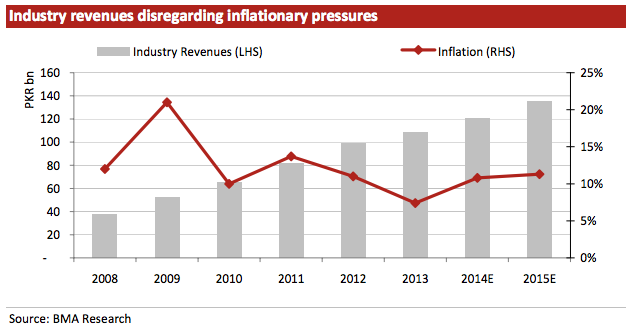News Analysis |
In contradiction to the current debate bashing Pakistan economy for its poor performance, State Bank of Pakistan (SBP) released its report on Wednesday. It indicated that foreign direct investment (FDI) has increased by 56% in the first quarter of the financial year (FY) 2017-18. It is opposite to the trends shown by the FDI in the last four years.
FDI in July-September amounted to staggering $662 million as opposed to $423m a year ago, which depicts an increase of impressive $238.5m. During this period, against the encouraging inflow, the outflow was $ 772.4 million. Similarly, improving exports and remittances also reflected the positive signs of the economy.
Pakistan economy over the years has failed to revitalize itself on a backdrop of widespread corruption, higher cost of energy, weak trade facilitation and obsession with debt-financed growth
Chinese investment under CPEC has been pivotal in improving the FDI position. The bulk of this investment rose with the investment flowing into the power and infrastructure sector. However, the significant portion of investment also came from other countries through mergers and acquisition transactions in food and electronics.
Read more: State Bank of Pakistan performing despite obstructions
China had the highest FDI net figure of $137.7 million as the inflow was $139.8million as compared to the outflow of $3.8million. FDI from China was 216% higher than the same quarter in the previous year when Pakistan had received a $136million.
Other than China, the most prominent contributors include the United Kingdom, US, UAE, Switzerland, Norway, Italy, Japan, Luxemburg, and Sweden as they made the net investments of $57.1, $32.1, $20, $18, $15, $15, and $12.5 million respectively.
Reliance on import based consumption primarily subsidized by the exports sector of Pakistan has been a concern as it overvalues the exchange rate. Resultantly, the export-financed consumption will fail to take Pakistan to its desired sustainable level
The SBP depicted in its report that portfolio investment was negative in this quarter under review as compared to the same quarter this year, where it reflected the strong positive figure of $27.5 million. If this trend continues, it can undoubtedly help Pakistan fight its woes which have gone worse with the depleting foreign exchange reserves.
It is resonant of the echoes of some of the great economists and government which continues its rhetoric of potential improvements expected in the beleaguered Pakistani economy. Since, the reports published by the SBP on 12-Oct on the state of Pakistan’s economy, twin deficits — rising current account and trade deficits are widely debated in electronic and print media.
Read more: Talk about economy but mend your ways, Sir
Pakistan’s reserves hovering around at less than $20 billion have been a major concern in recent past. As Pakistan continues to witness the increase in its import bill due to CPEC-related machinery imports from China, the pressure is expected to continue on imports. The economists have been vocal of their concern with this import figure.
Sakib Sherani argued that non-machinery and non-energy imports have also extended towards the deterioration of the external account. Moreover, reliance on import based consumption primarily subsidized by the exports sector of Pakistan has been a concern as it overvalues the exchange rate. Resultantly, the export-financed consumption will fail to take Pakistan to its desired sustainable level.
The SBP depicted in its report that portfolio investment was negative in this quarter under review as compared to the same quarter this year, where it reflected the strong positive figure of $27.5 million
With worsening external position, opposition grabbed the opportunity and labeled Pakistan increasingly a failed economy. Though some economists believe that the story of boom and bust is waiting to be repeated, some still foresee a positive picture.
Asad Zaman, the Vice Chancellor of PIDE and renowned econometrician have presented a rosy picture of the economy. The celebrated economist referred to IMF’s recent projections of accelerating growth for Pakistan, exceeding those of the BRICS countries as the sign of the continuing success of Pakistan. He believes that, “it appears mysterious to laymen, high budget and BOP deficits, appropriately handled, are the drivers and engine of high growth.”
Read more: Pakistan’s economy: Growing or declining?
Additionally, if the progress of CPEC is analyzed, the energy position has consolidated and is expected to improve in further next year. Besides, infrastructure projects are running at the adequate speed, and most of the reputed foreign newspaper and magazines labeled Pakistan as next big thing in Asia.
The celebrated economist referred to IMF’s recent projections of accelerating growth for Pakistan, exceeding those of the BRICS countries as the sign of the continuing success of Pakistan
In such contrasting viewpoints, where some political parties and economists are lamenting the government’s economic performance, few believe it to be sheer non-sense for point scoring and to increase personal leverage.
Stakes are high, the new Silk Road is functional, and increasing exports, remittances and now FDI reflect the positive signs for the economy. But, soaring debt to GDP ratio and deteriorating external balance have been a concern. Pakistan economy over the years has failed to revitalize itself on a backdrop of widespread corruption, higher cost of energy, weak trade facilitation and obsession with debt-financed growth. It must change its course and realize its potential. The surge in FDI is a positive sign reflecting bright future, amid the worrisome external position.














